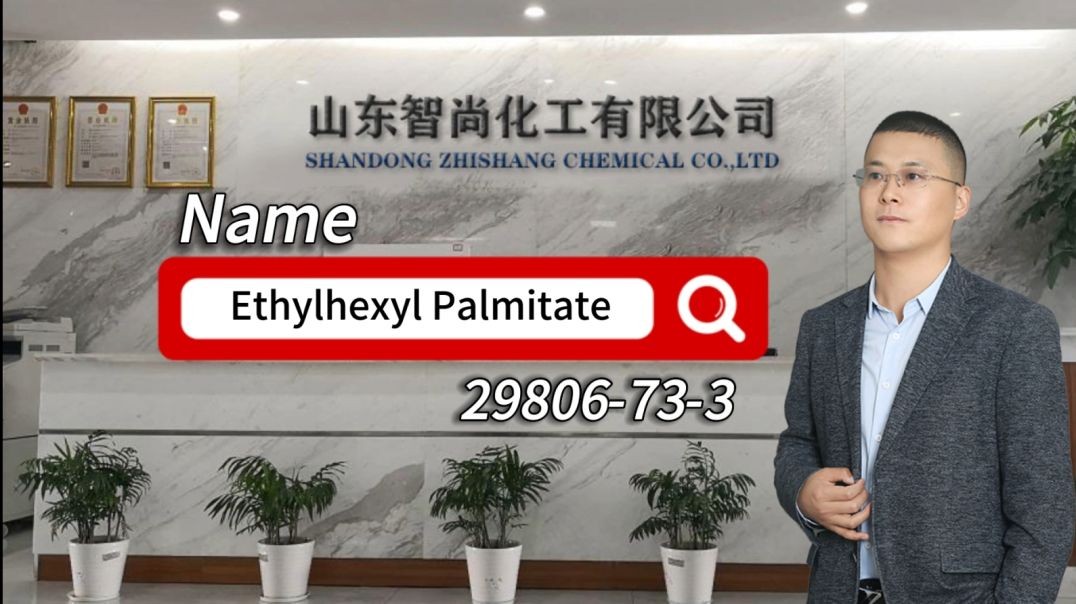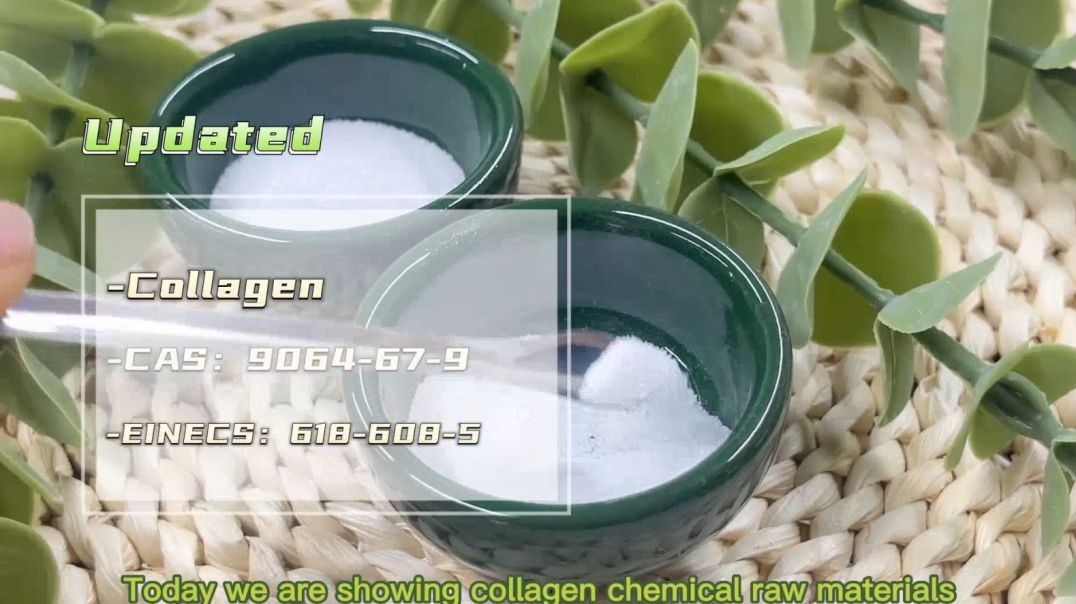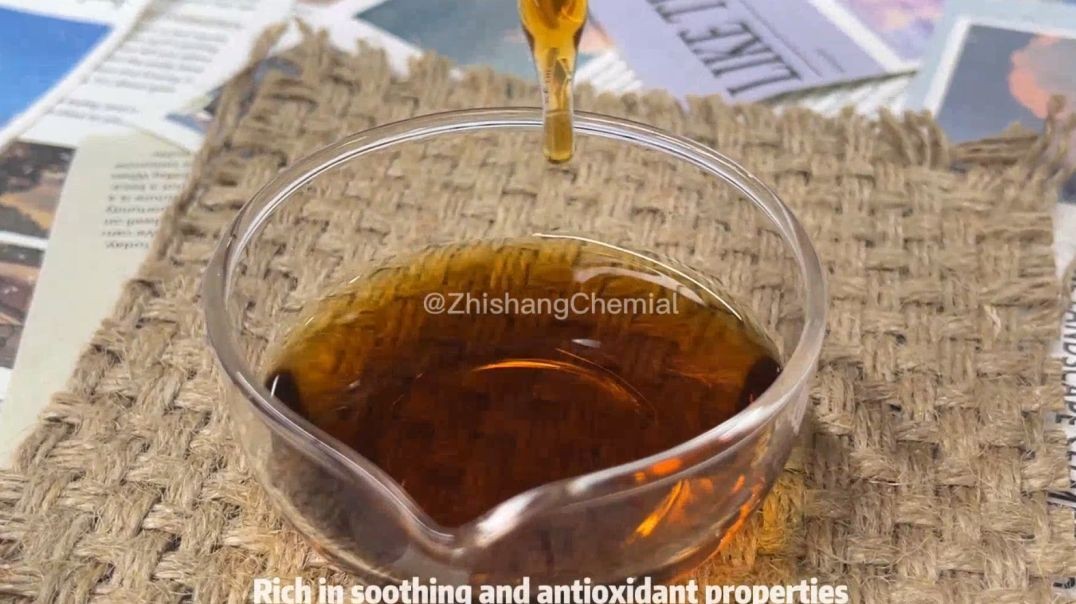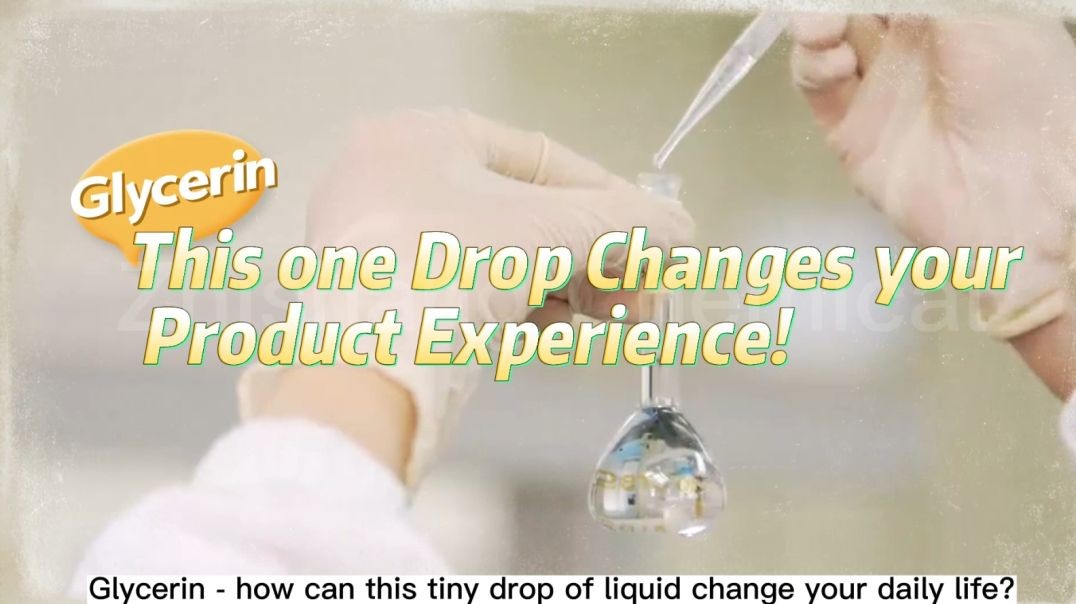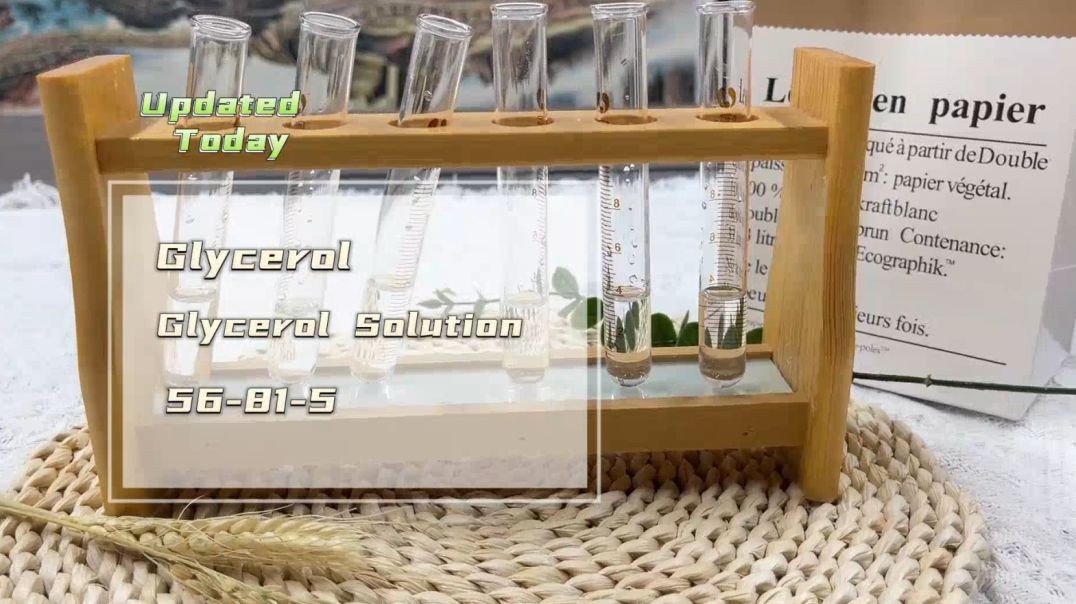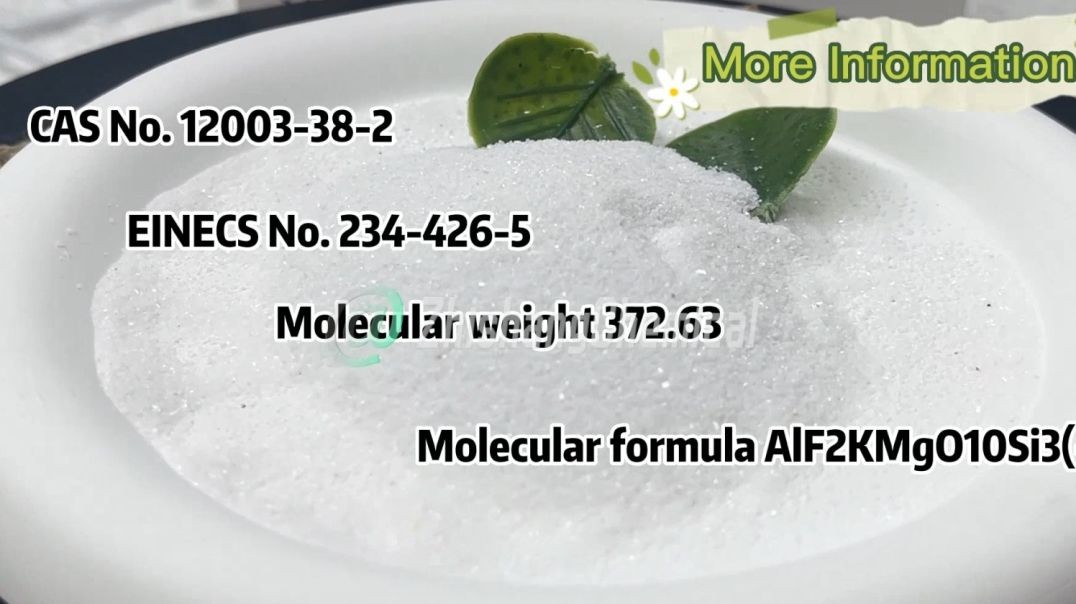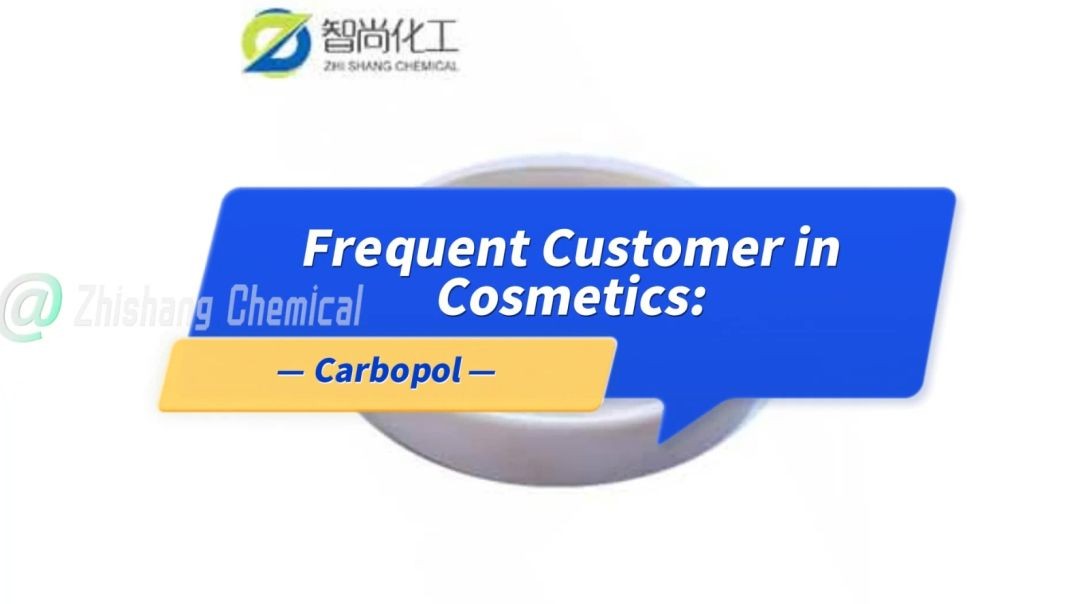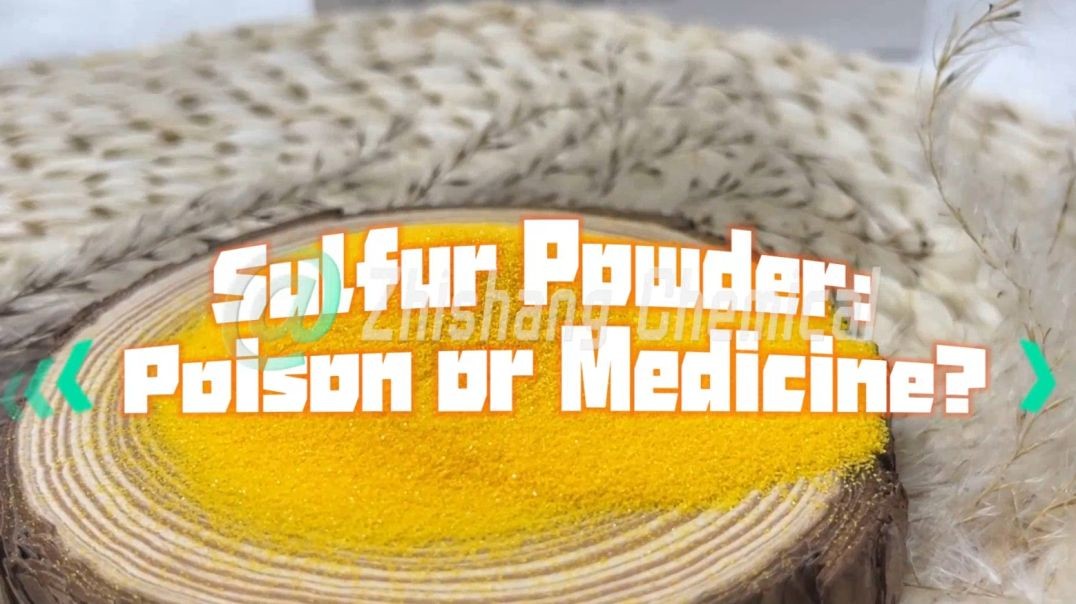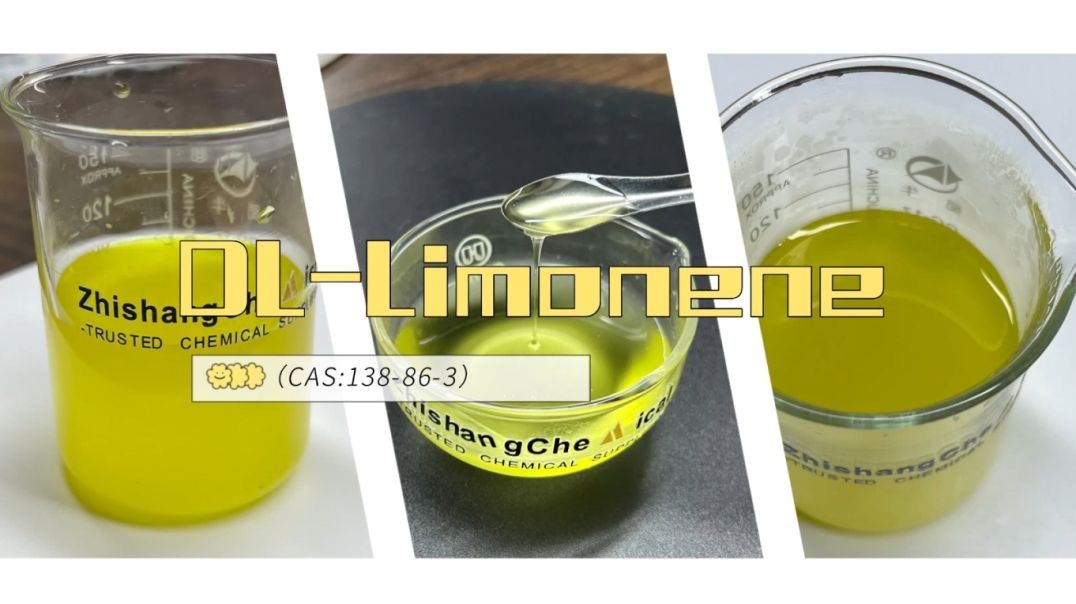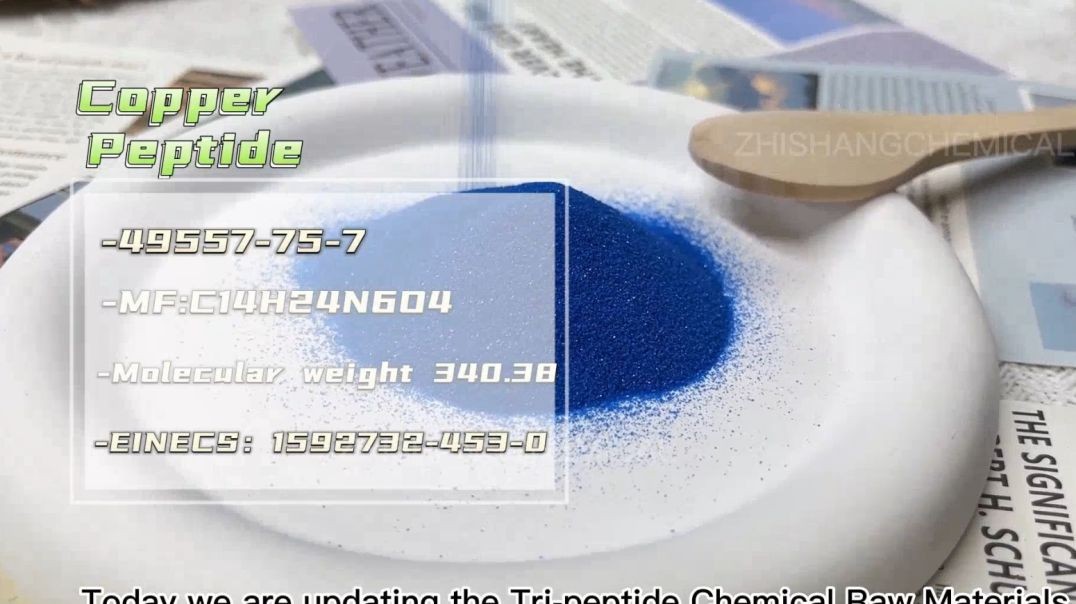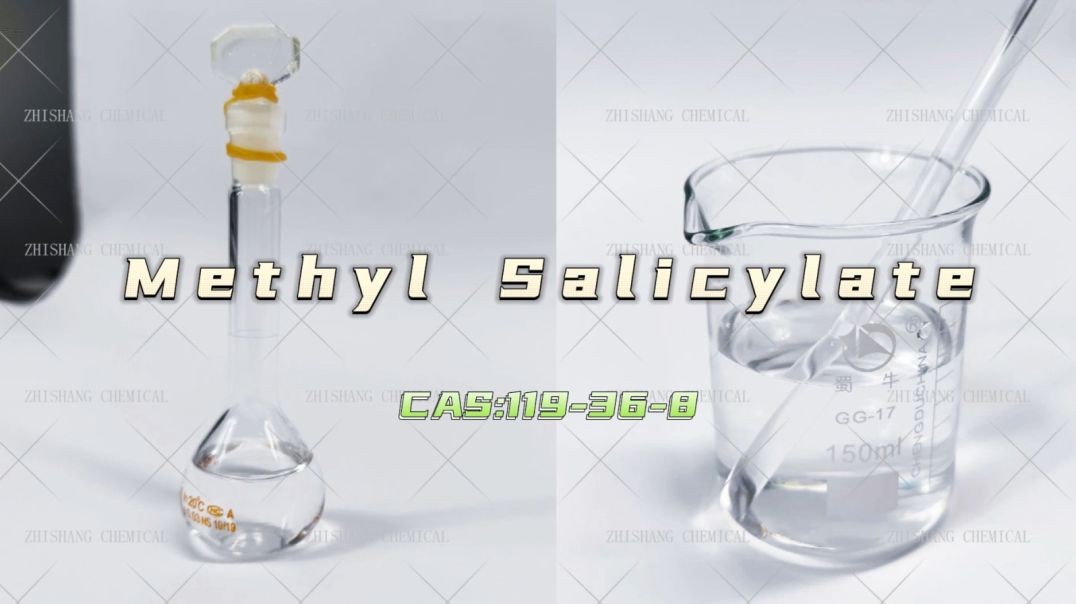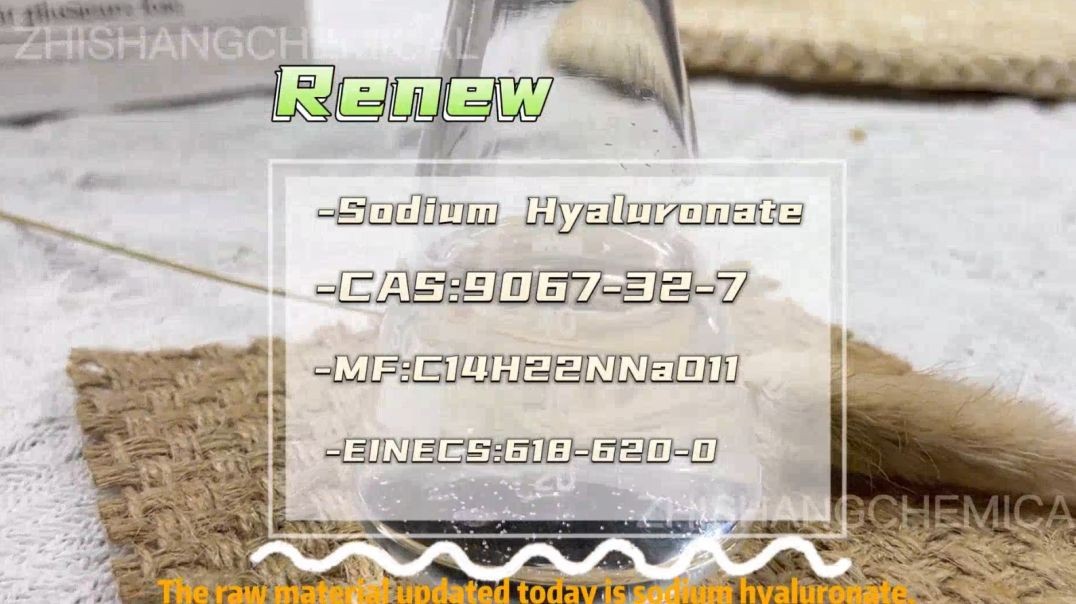Top videos
Isooctyl palmitate itself has low viscosity, non-greasy, good compatibility with the skin, good emollience, ductility and permeability, is an important oily raw material for the production of high-grade cosmetics, and is often used in various human skin care products. It can also be used as a plasticizer for ethyl cellulose, cellulose nitrate and polystyrene, and can also be used as an auxiliary plasticizer for polyvinyl chloride. In addition, isooctyl palmitate can be directly used as an additive for high-grade lubricating oil, cutting oil, coolant, rolling oil, drilling oil and other oil additives in advanced instrument processing.
Application 1: In the healthcare industry, collagen is mainly used as a scaffold material, skin, and bone in tissue engineering. With the application of collagen in tissue engineering, the use of bioengineered membranes has become more widespread, such as vascular membranes, heart valves, and ligaments. Collagen has good biocompatibility and biodegradability safety, is biodegradable and absorbable, and has good adhesion, thus possessing unique skin repair functions. After modification, it can be used to make skin transplant materials. Collagen can form the skeleton of the extracellular matrix, which is an important component of cells. It plays an anchoring and supporting role in cells and provides an appropriate microenvironment for cell proliferation and growth, as well as a good nutritional supply. Therefore, whether collagen serves as the skeleton of new tissue before absorption or is absorbed and assimilated into the host, becoming a part of the host tissue, it has a good coordinating effect with the matrix around cells, which is conducive to the proliferation and repair of epithelial cells, thus promoting wound healing. It can be used for the repair, treatment, and care of burns and injuries, and can reduce and alleviate the degree of burns and scalds. Collagen biological dressings have two advantages: one is that the preparation method is simple, sterilization is convenient, and processing is easy; Secondly, it has good adhesion, is suitable for the formation of granulation tissue and epithelial cells, can reduce wound contraction and antigen reactions, has good hemostatic performance, and is easy to absorb tissue secretions. Collagen, due to its unique properties, can also be used for the treatment of ophthalmic diseases. Collagen can promote the repair of corneal epithelial cell damage and cell growth, and can dissolve in tears, with the ability to guide epithelial cells to infiltrate the defect area. At the same time, its degradation products can be utilized by new cells to synthesize new collagen, which plays a role in connecting cells. Therefore, it is widely used in the treatment of ophthalmic diseases. Collagen can also serve as a carrier for ocular drug delivery, with the ability to increase drug concentration, prolong drug action time, and reduce systemic drug toxicity. It has broad development prospects. Collagen is widely used in clinical medicine for cosmetic orthodontics, treatment of periodontal diseases, hard tissue repair, nerve repair and regeneration, periodontal nerve repair wrapping materials, artificial organs, pacemakers, and fillers for human organs.
2. The application of collagen in cosmetics can be extracted from animal skin. In addition to collagen, animal skin also contains proteoglycans such as hyaluronic acid and chondroitin sulfate, which are natural moisturizing factors and important substances for maintaining skin moisture. They also have the effect of preventing tyrosine in the skin from being converted into melanin. Collagen, similar in structure to the collagen in the skin and the stratum corneum, can promote the proliferation and repair of epithelial cells, supplement nutrients such as amino acids, improve the living environment of skin cells, promote the metabolism of skin tissue, and enhance circulation, filling and repairing damaged and aging skin. It also has good compatibility, affinity, and permeability with the skin, and can be fully absorbed by the skin, making the skin plump, wrinkle free, and able to increase skin density and tension. Therefore, collagen has the functions of pure natural moisturizing, whitening, freckle removal, wrinkle prevention, etc. It can be widely used in the cosmetics industry. Nowadays, many cosmetics sold in the market, such as facial mask, eye cream, skin cream, etc., contain collagen
3. Collagen has two applications in the food industry: functional and nutritional. Collagen peptides can be consumed directly as functional foods, such as chewable tablets, protein powders for athletes, and enteral nutrition preparations. People consuming foods rich in collagen can not only effectively delay aging, strengthen muscles and bones, and enhance physical fitness, but also have health benefits such as weight loss, blood pressure reduction, and calcium supplementation. After being treated with specific enzymes, collagen can break down the hydrogen bonds within its molecules, causing the original tight supercoiled structure to be disrupted, resulting in a loosely structured small molecule substance. Adding it to meat products can improve connective tissue, increase protein content, have a good taste, and are nutritious. The enzymatic hydrolysis products of collagen can also be used as amendments for frozen foods, as thickening agents, with a low melting point, easy solubility, and the characteristic of melting at the mouth. Therefore, collagen is widely used in foods such as jelly, cheese, ham, canned food, bread, etc. In addition, utilizing the film-forming properties of collagen, it can be used as a film material for curing enzymes and meat food labels. Collagen can also be used as a food adhesive to synthesize fiber membranes and as a food protective layer, used as packaging paper for meat, fish, etc. As a food protective layer, it has antioxidant properties and maintains the bright color of meat products.
Ensuring the safety and reliability of chemical raw materials requires multiple approaches, and the following are some key measures:
1. Procurement process:
Select qualified suppliers: Prioritize suppliers with good reputation and complete qualifications, and regularly evaluate their performance.
Clear specification requirements: Provide detailed information on the specifications, purity, packaging, and other details of the raw materials in the procurement contract.
Strict acceptance: Check the packaging, labels, certificates, etc. upon receipt, and conduct sampling testing if necessary.
2. Storage process:
Reasonable storage: Select appropriate storage conditions based on the characteristics of the raw materials, such as temperature, humidity, light, etc.
Classification management: Store according to hazard level and chemical properties to avoid reactions caused by mixing.
Regular inspection: Regularly check storage conditions and promptly handle expired or deteriorated raw materials.
3. Usage process:
Train employees: Provide safety training to operators to ensure they master the correct operating methods and emergency measures.
Standardized operation: Strictly follow the operating procedures to use raw materials and avoid misuse or abuse.
Personal protection: Use protective equipment such as gloves, goggles, etc. as needed.
4. Transportation process:
Compliant transportation: Comply with the regulations for the transportation of hazardous chemicals, choose appropriate transportation vehicles and packaging.
Safe loading and unloading: Handle with care to prevent collision and leakage.
Emergency preparedness: Develop emergency plans and equip necessary emergency supplies.
5. Other measures:
Establish management system: Develop a comprehensive chemical raw material management system, clarify responsibilities and processes.
Regular review: Regularly inspect the implementation of the system and make timely improvements.
Application of Information Technology: Using information technology to manage chemical raw materials, improving efficiency and safety.
Specific measures need to be adjusted according to the actual situation, and it is recommended to consult professionals.
Here are some additional suggestions:
Maintain good ventilation: When using and storing chemical raw materials, ensure good ventilation.
Keep away from fire sources: Store chemical raw materials in a place away from fire and heat sources.
Proper disposal of waste: Dispose of chemical waste in accordance with relevant regulations to avoid environmental pollution
Menthol is a rarely used traditional Chinese medicine, which is a colorless and transparent needle shaped or prismatic crystal, or a white crystalline powder. The crystal length varies, with a length of about 3cm and a thickness of about 0.3cm. It is fragile when twisted by hand. There is a mint aroma, and the taste is initially hot and then cool. Colorless and transparent, with a strong odor is preferred. Menthol is extracted from the leaves and stems of peppermint, with white crystals and a molecular formula of C10H20O. It is a colorless transparent needle shaped or hexagonal prism shaped crystal. There is a special cool mint aroma and fragrance, presenting a cool, ether, and spicy aroma. Sublimative and with a mint aroma, the taste is initially hot and then cool, easily volatile, and the ethanol solution is neutral. It is highly soluble in ethanol, chloroform, ether, liquid paraffin or volatile oil, and only slightly soluble in water.
Spring chrysanthemum oil is traditionally used in European folk medicine to treat colds, fever, indigestion, gastrointestinal inflammation, spasms, etc. It can also be used topically to reduce inflammation and swelling. Chrysanthemum oil has strong anti-inflammatory activity and unique fragrance because it contains red myrrhol compounds and the chemical components of mother chrysanthemum. It can be used in cosmetics such as lipstick, soap, sunscreen, and shampoo. It has both natural fragrance and can prevent skin cracking and inflammation. It plays a dual role in makeup and prevention. It can be used in mouthwash to treat toothache. Because it is a natural product that is non-toxic and harmless, and has a unique and similar aroma of natural chrysanthemum flowers, it can be used as an aromatic agent in sweet wine.
On the Winter Solstice Reunion Day, the company organized everyone to eat dumplings together, bringing them closer together with laughter and joy. Hot dumplings symbolize unity and may we work together in the future to achieve even greater success!
summary
Dimethyl sulfone is an organic sulfide that enhances the ability of the human body to produce insulin and promotes carbohydrate metabolism. It is an essential substance for collagen synthesis in the human body. It can promote wound healing and also play a role in the synthesis and activation of vitamin B, vitamin C, and biotin required for metabolism and neurological health, known as "naturally beautifying carbon substances". It is found in the skin, hair, nails, bones, muscles, and various organs of the human body. It mainly exists in the ocean and soil in nature and is absorbed as a nutrient in plant growth. Humans can consume it from vegetables, fruits, fish, meat, eggs, milk, and other foods. Once lacking, it can cause health disorders or diseases. It is the main substance for maintaining the balance of biological sulfur elements in the human body and has therapeutic value and health functions for human diseases. It is an essential drug for human survival and health protection. Abroad, it is widely used as an equally important nutrient as vitamins. However, research on the application of dimethyl sulfoxide in China has not been well carried out, so all products are currently exported.
effect
1. It can eliminate viruses, strengthen blood circulation, soften tissues, alleviate pain, strengthen muscles and bones, calm the mind, enhance physical strength, maintain skin, beautify hair, treat arthritis, oral ulcers, asthma, constipation, unblock blood vessels, and eliminate gastrointestinal toxins.
2. Dimethyl sulfone can be used as a food and feed additive for supplementing organic sulfur nutrients in humans, pets, and livestock.
3. When applied topically, it can make the skin smooth, muscles soft, and reduce pigmentation. Recently, its use as a cosmetic additive has increased dramatically.
4. It has good analgesic and wound healing functions in medicine.
5. Excellent penetrating agents in drug production.
Glycerol is widely used in cosmetics, mainly due to its excellent moisturizing and skincare properties. The following are the main uses of glycerol in cosmetics:
1. Moisturizing agent
Glycerol is a powerful moisturizer that can absorb moisture from the air, help the skin stay hydrated, and prevent dryness.
2. Lubricants
Glycerol can enhance the texture of cosmetics, making them easier to apply and providing a smooth feeling.
3. Thickener
In some products, glycerol is used to regulate viscosity and texture, improving the user experience.
4. Solvent
Glycerol can be used as a solvent to help dissolve other ingredients and enhance the stability of the formula.
5. Protection barrier
Glycerol helps repair and enhance the skin barrier, reduce water loss, and protect the skin from external stimuli.
6. Soothing agents
Glycerol has a soothing effect and can reduce skin irritation and inflammation, making it suitable for sensitive skin.
7. Anti aging
By maintaining skin moisture, glycerin can reduce the appearance of fine lines and wrinkles, and enhance skin elasticity.
8. Hair care
Glycerol is also used in hair care products to help maintain hair moisture, prevent dryness and breakage.
9. Stabilizers
Glycerin helps to stabilize lotion and creams and prevent separation of ingredients.
10. Plasticizer
In facial mask and peel off products, glycerin can increase flexibility, making it easier to use and peel off.
Glutathione is an antioxidant found in plants, animals, fungi, as well as some bacteria and archaea. Glutathione can prevent damage to important cellular components from sources such as reactive oxygen species, free radicals, peroxides, lipid peroxides, and heavy metals.
As an antioxidant in animal cells, it exists inside cells filled with water and can protect DNA from oxidation. Glutathione exists in two forms in the human body, one is the reduced form and the other is the oxidized form. Spinach contains glutathione.
Glutathione can directly inhibit tyrosinase activity, while sweeping away a large amount of oxidative free radicals, preventing free radicals from activating tyrosinase, and hydrolyzing into cysteine, interfering with melanin synthesis. That is to say, during the whitening process, it has both "antioxidant" and "inhibitory" dual effects.
Glutathione is still a small molecule peptide with a molecular weight of 307 daltons (molecules larger than 500 daltons cannot cross the skin barrier).
This means that glutathione applied to the skin can be absorbed by the skin. Moreover, it is also an inherent antioxidant component in human cells, making it easier to "trick" the defense layer and enter the body.
Synthetic fluorogold mica flakes KMg3 (A1Si3O10) F2 (also known as synthetic mica) are layered silicate compounds formed by high-temperature reactions, melting, cooling, crystallization, and growth of chemical and mineral raw materials. It does not contain hydroxyl groups, so it has good temperature resistance and good insulation properties; It is directly fired from compounds, so it has high purity and whiteness.
The artificially synthesized fluorogold mica powder is widely used in mica titanium pearl pigments, cosmetic powders, plastics, and ceramic fillers. At the same time, the artificially synthesized fluorogold mica is widely used in the electronics industry due to its excellent electrical insulation properties.
Synthetic fluorogold mica can be widely used in mica titanium pearl pigments, cosmetic powders, plastics, and ceramic fillers. At the same time, artificially synthesized fluorogold mica is widely used in the electronics industry due to its excellent electrical insulation properties.
Among the dazzling array of cosmetics, Carbopol plays an indispensable role. This seemingly ordinary white powder is actually a "magician" of cosmetic texture.
It can turn water into crystal gel, making lotion more silky, and forming a breathable film on the skin surface to lock water.
Whether it is a refreshing gel or a thick face cream, it is inseparable from the thickening and stabilizing effect of Carbomer. It is gentle and skin friendly, with high safety, making it a reliable assistant for cosmetic formulators.
Although Capom is unknown, he safeguards our beauty and is undoubtedly the 'invisible guardian'.
Squalene, also known as thirty carbon hexaene or cod liver oil ene. A polyunsaturated olefin with regular branched chains. A representative branched chain alkene found in small amounts in certain phytoplankton, seawater, yeast, bacteria, malt, olive oil, wheat germ oil, and rice bran oil in marine environments.
Effect and Function
Squalene has biological activities such as improving hypoxia tolerance, inhibiting microbial growth, antibacterial and anti-inflammatory effects, and regulating cholesterol metabolism. Moreover, squalene is a non-toxic enhancer with anti-aging and anti-cancer effects. Squalene has a wide range of sources and is present in microorganisms, plant seeds, and microalgae
Sulfur powder is both medicinal and toxic, depending on its usage, dosage, and application scenarios.
As a medication:
Skin treatment:
Usage: Used for treating skin diseases such as acne, scabies, eczema, etc.
Function: It has antibacterial, antifungal, and antiparasitic effects.
Application of Traditional Chinese Medicine:
Usage: In traditional Chinese medicine, it is used to warm yang, dispel cold, kill insects and relieve itching.
Application: Commonly used in topical preparations, such as sulfur soap.
As a poison:
Toxicity:
Inhalation risk: Inhaling sulfur powder can irritate the respiratory tract, causing coughing and difficulty breathing.
Ingestion risk: Ingestion may cause gastrointestinal discomfort, and in severe cases, may lead to poisoning.
Environmental hazards:
Pollution: A large amount of sulfur powder may contaminate soil and water sources, affecting the ecosystem.
Limonene, also known as n í ng ene, is also written as limonene. It is the main component of essential oil extracted from citrus peel in the Rutaceae family, but it is not the main flavor of citrus aroma.
There are three isomers of limonene, with natural limonene having optical activity, namely left-handed limonene and right-handed limonene, while artificially synthesized limonene does not have optical activity and is racemic limonene. The more common ones in aromatic organic chemistry are left-handed and right-handed.
Lemonene has three main applications in daily life: daily chemical flavoring, food flavoring, and medical research. In the field of daily chemical fragrance, it is usually used for the deployment of soap, detergent, skin care products, perfume, essence and other daily chemical products.
In terms of food flavoring, it is used to add essence to food and beverage products and enrich the flavor of products. In addition, it has also been widely applied in medical research, especially in anti-tumor fields.
Tripeptide (copper peptide) is formed by three amino acids, tripeptide is also called blue copper peptide; Glycylyl-l-histaminoyl-l-lysine. Tripeptide A triadic molecule composed of three amino acids linked by two peptides. It can effectively block the nerve conduction of a acetylcholine substance, has the effect of relaxing muscles, and improves dynamic wrinkles.
Hydroquinone
A potent whitening agent that directly inhibits tyrosinase, but may cause irritation or depigmentation (restricted in some countries).
Alternative ingredient: Arbutin (mild derivative).
Kojic Acid
Originating from fungi, it inhibits tyrosinase by chelating copper ions, and sensitive muscles may require caution.
377 (phenethyl resorcinol, SymWhite) ®)
Efficient tyrosinase inhibitors, commonly found in high-end whitening products.
Tranexamic Acid
Blocking melanin activation signals (such as prostaglandin PGE2) and having anti-inflammatory effects.
Sodium nitrite (NaNO ₂) is a common food additive mainly used for marinating meat (such as ham, sausages, bacon, etc.), which has preservative, color preserving, and flavor enhancing effects. However, excessive intake or improper use may pose health hazards, mainly including the following aspects:
1. Acute poisoning (high-risk)
Toxic dose: Adults may be poisoned if ingested 0.2-0.5 grams, and may die if ingested 1-2 grams.
Symptoms: Dizziness, vomiting, difficulty breathing, decreased blood pressure, and in severe cases, tissue hypoxia, coma, and even death due to methemoglobinemia.
Vulnerable population: Children or those who accidentally consume salt are at higher risk (such as mistakenly using it as salt).
2. Carcinogenic risk (long-term exposure)
The formation of nitrosamines: Nitrites react with amines produced by protein decomposition under gastric acid or high temperature cooking conditions, producing strong carcinogens such as nitrosamines (N-nitroso compounds).
Related cancers: Long term excessive intake may increase the risk of gastric cancer, esophageal cancer, colorectal cancer, and other cancers.
Retinol is a fat soluble vitamin that exists in the form of free aldehydes or esters in animal food. It is abundant in fat, protein, dairy, and liver. Plants do not contain vitamin A, but its precursor (provitaminA) is present in vegetables such as carrots and tomatoes. After being absorbed by animals, it can be converted into vitamin A. Retinol is essential for maintaining the stability of human growth, development, reproduction, and cell membranes, and plays an important role in the visual process. Retinal is constantly metabolized and consumed in the body, and needs to be supplemented in a timely manner through the oxidation of vitamin A.
Vitamin A is related to the normal structure and function of upper and lower cells. Deficiency can lead to dryness, inflammation, and even blindness of the conjunctiva and cornea, as well as damage to the respiratory epithelium, making it prone to respiratory infections, hair loss, and delayed infant development. Vitamin A oil, as a nutritional supplement, is a fatty oil or its concentrate obtained from the liver and pylorus of aquatic animals.
Crush fresh fish liver and pylorus, add 1-2% sodium hydroxide solution to pH 8-9. Retinol can be used in sausages, margarine, bread, dairy products, fruit juice powder, peanut butter, etc.
Methyl salicylate is a colorless or yellow to red oily liquid with a unique herbal aroma, sweet and spicy in taste. It is an organic compound formed by the combination of the hydroxyl group of methanol and the carbonyl group of salicylic acid.
Methyl salicylate naturally exists in essential oils such as holly oil, ylang ylang ylang oil, and acacia oil, accompanied by a unique holly oil fragrance.
Effect and Function
Methyl salicylate is mainly used as an external topical red agent, commonly used for reducing swelling and relieving pain. However, due to its side effects such as affecting the activity of iron ions in the blood, it is now rarely used for oral medication. It has a local stimulating effect, which can promote local blood circulation. External application or local rubbing can produce skin vascular dilation, skin redness and other stimulating reactions, and reflexively affect the corresponding skin, muscles, nerves and joints, thereby reducing swelling, anti-inflammatory and analgesic effects, as well as relieving itching. Can be used for sprains, contusions, lower back pain, muscle pain, neuralgia, and itching relief.
Sodium hyaluronate (also known as hyaluronic acid) is a naturally occurring polysaccharide substance with strong water retention ability, widely used in the fields of medicine, cosmetics, and food. In medical beauty, it is commonly used for injection filling and moisturizing repair; As a highly effective moisturizing ingredient in skincare products, it can enhance skin hydration; As a food additive (such as health food), it helps to lubricate joints and improve skin moisture.
It has high safety and good biocompatibility, but it should be noted that injectable products must be operated by professional physicians, and edible grade sodium hyaluronate must comply with national food safety standards (such as being approved as a new food ingredient in China).
